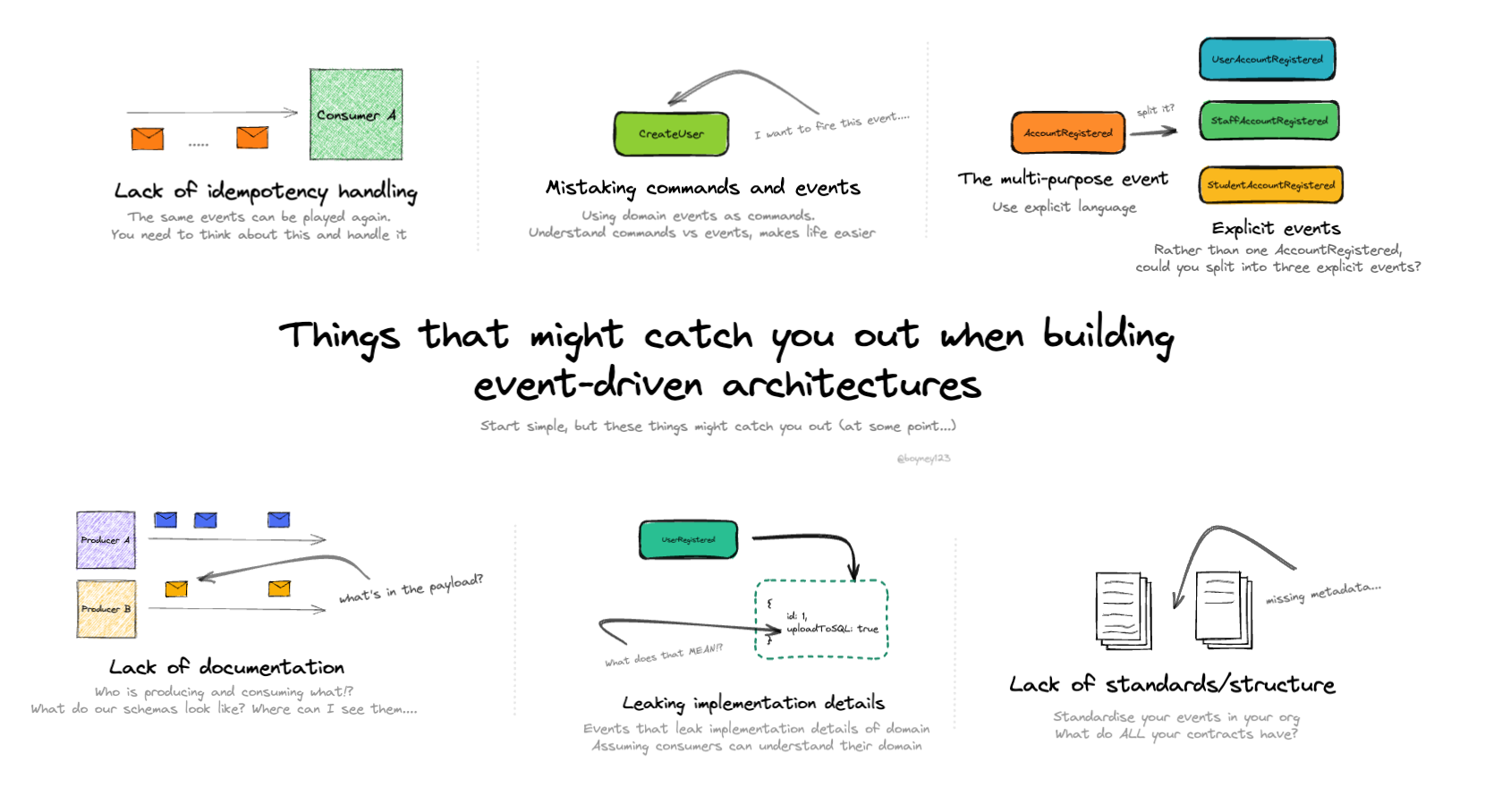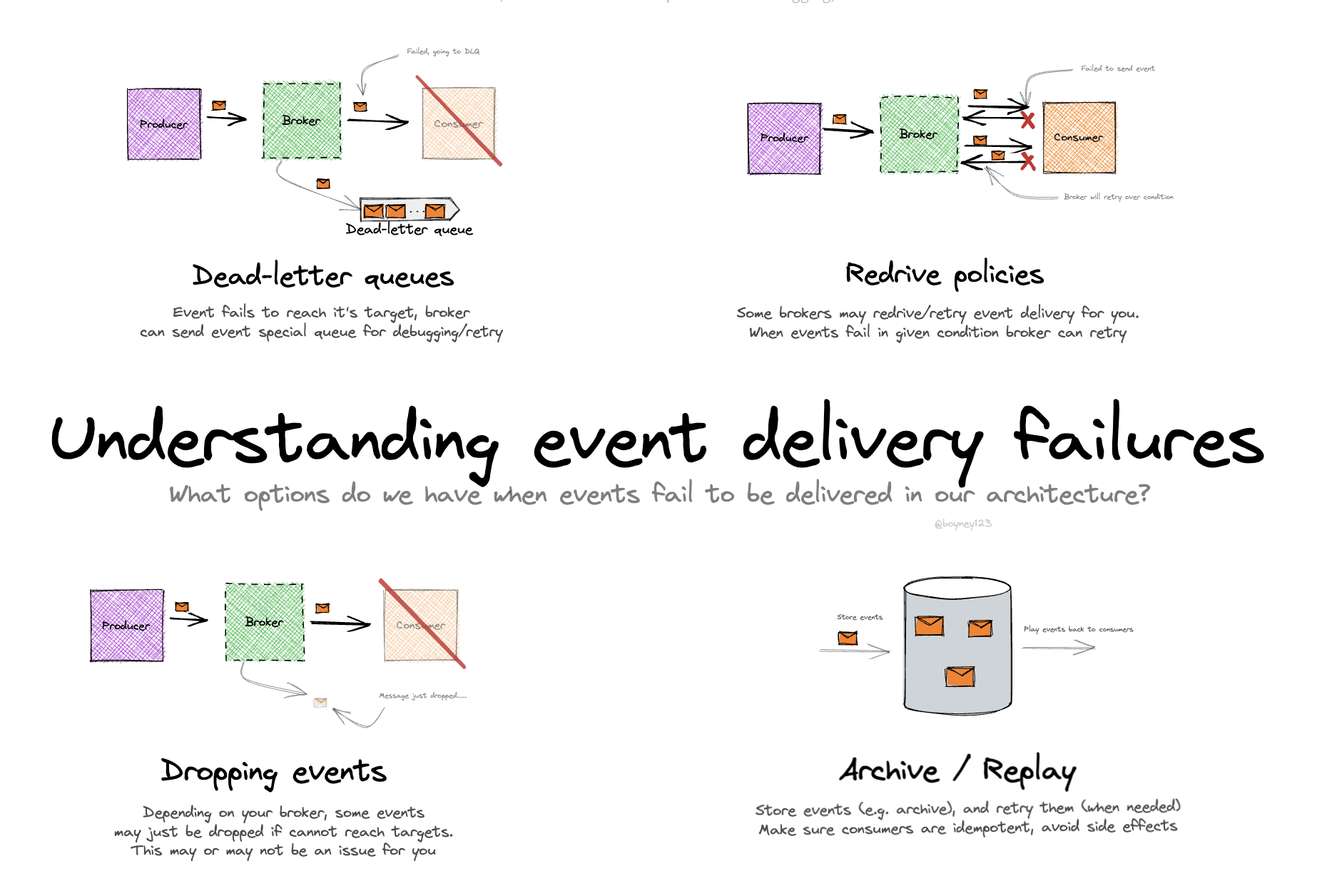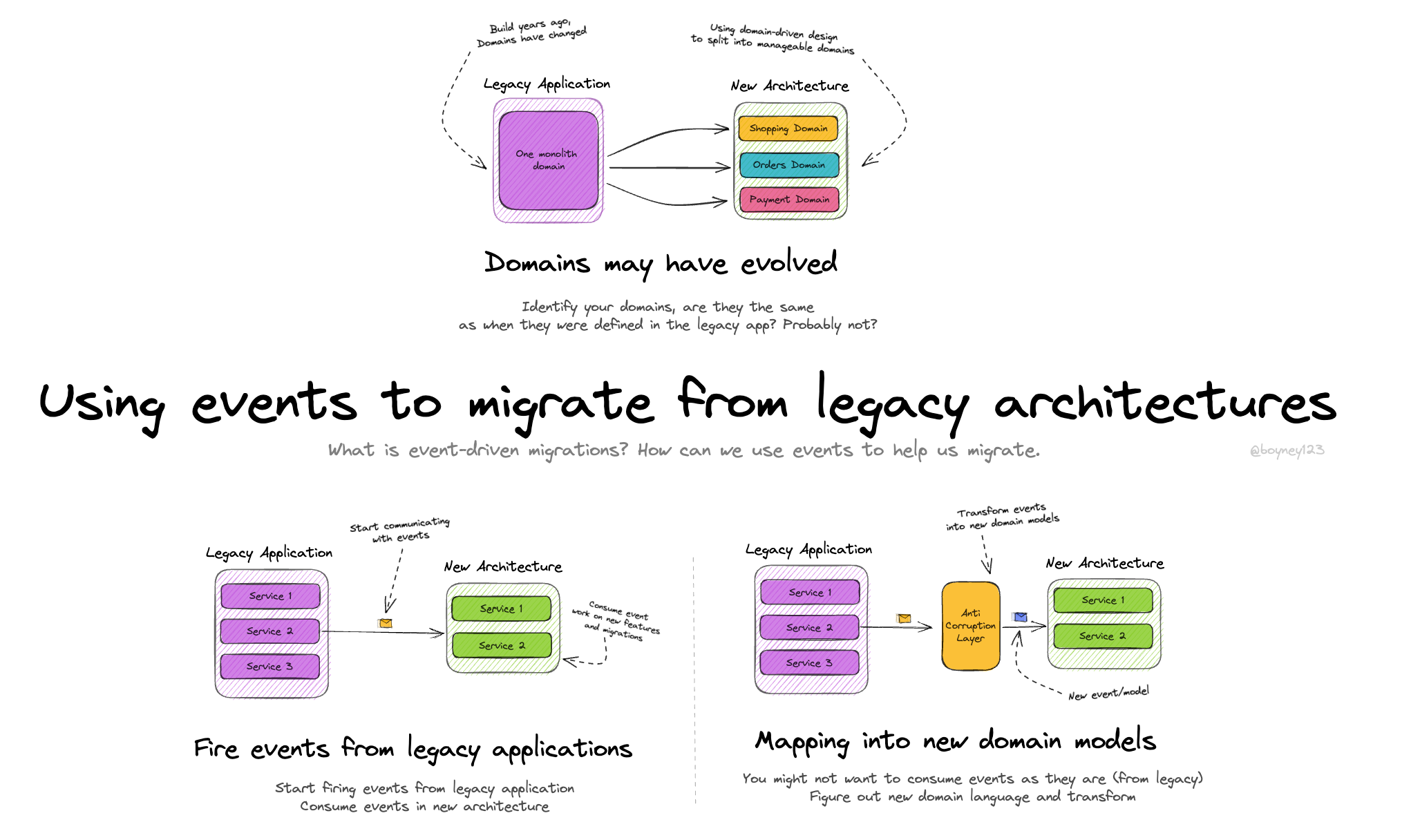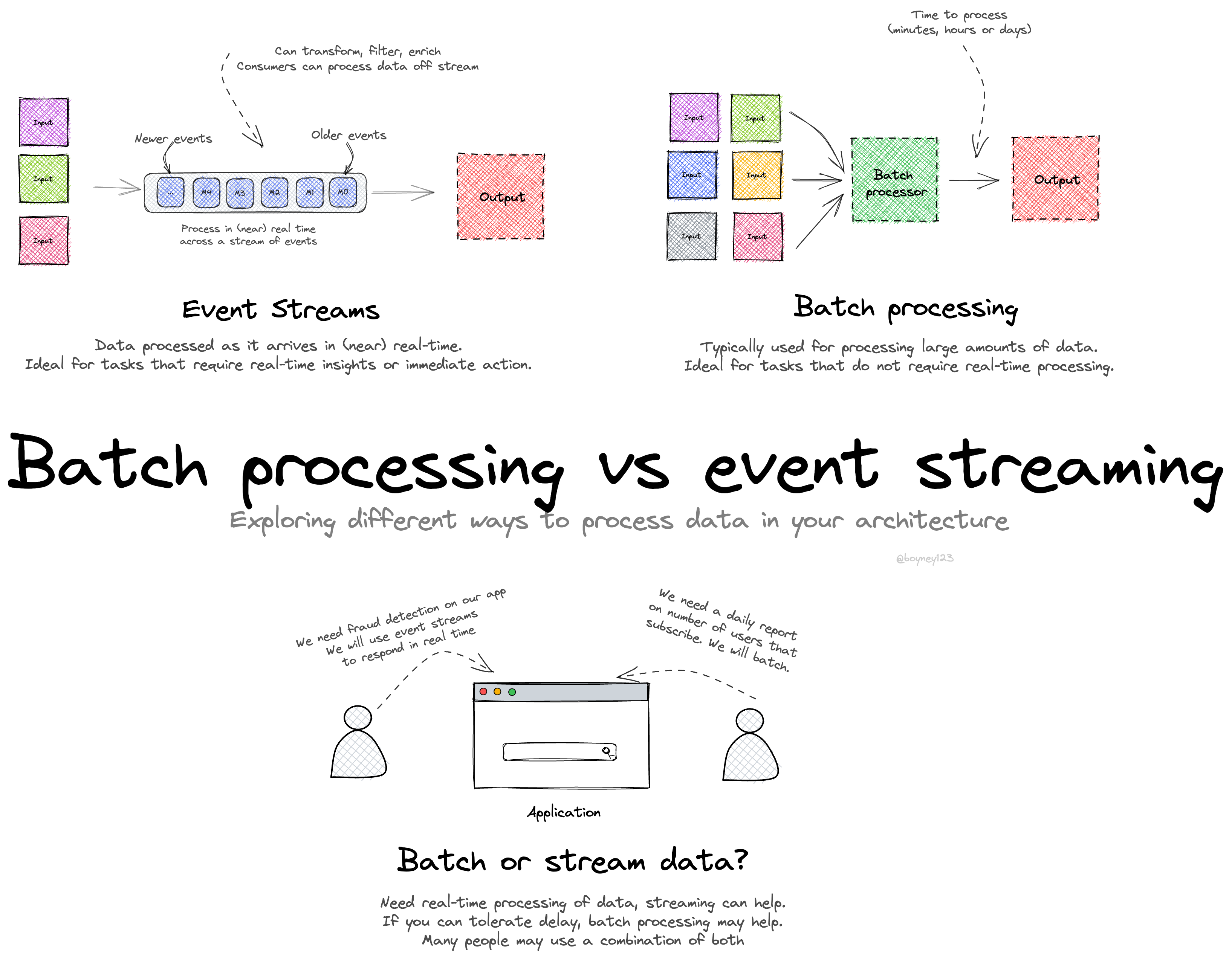Things to consider when building EDA architectures By David Boyne
Things to consider when building EDA architectures By David Boyne

Learning event-driven architecture?
I built EventCatalog — an open-source tool that helps you visualize, document, and understand how events, services, and domains connect in event-driven architectures.
Perfect for learning: Create visual diagrams, document your first events, and see how everything connects. Get started for free →
When you start building event-driven applications you start to write producers and consumers and you start to see value quite fast. Over time as more producers and consumers are added you will start to face some common issues (these issues listed are all problems I have experienced and seen in the community)
Lack of idempotency handling
Consumers may process your events more than once (e.g. if events need to replay, or failures etc), your consumers need to handle this. You need to make sure your consumers produce the same outcome regardless of how many times it was called with the same event, having side effects in your consumers (different results) can lead to issues.
Mistaking commands for events
An easy one when you get started, mistaking commands vs events. Here is a visual to help you understand the difference.
Multi purpose events
When you start designing and implementing your events, it’s easy just to add on that one extra field… “what if we add a type field here”, this works and might provide value, but over time your consumers might have a hard time understanding the intent of the event. Rather than having one event to rule them all, why not split them out? Something to think about…
Lack of documentation
Let’s face it, many people don’t like to write documentation, especially as you start to build your EDA applications. Overtime as you add producers and consumers it can be hard to keep track of who is producing what, and who is consuming what. Adding documentation can help. Here is visual with resources to help you.
Leaking implementation details
When you have clear boundaries of services, it can be easy to leak implementation details of your service in your event. Make your events explicit, don’t get consumers to guess what is happening, don’t confuse them with implementation details.
Lack of standards/structure
Overtime you might have 10s or 100s of events in your architecture, think about what goes into these events, maybe you might use CloudEvents or define your own standards, spend time here and think about it.
Extra resources
- Document your event-driven architectures - Visual here to help you understand ways to document your event-driven architectures.
- Identify domains and events with EventStorming - Think about how you are going to identify events in your system. EventStorming can help.
- Message delivery - How are your messages/events getting to your downstream consumers? Understanding this can help.
- Events are important - Event First Thinking - Treat events as a first class citizen in your architecture, doing this from the start can help you.
- Know the difference of types of events you raise - Notification events, Delta events, Event carried state transfer… what does it mean? Important to know.
- Commands vs Events - Quickly learn the difference between commands and events, 5min here can save pain later on.
- Passing events through context - Find your business domains and use events to communicate, you might need to transform them before consumers can understand them… that’s OK, look at these patterns.
Explore other visuals
Want to work together?
If you're interested in collaborating, I offer consulting, training, and workshops. I can support you throughout your event-driven architecture journey, from design to implementation. Feel free to reach out to discuss how we can work together, or explore my services on EventCatalog.
EDA Visuals: The book
Join over 13,000 others learning EDA and download all the EDA visuals directly to your computer.
This book contains all the visuals in one book, you can download, read offline and explore.
If you would like to support my work, you can purchase the book. This helps keeping the visuals free for the community. Purchase the book



